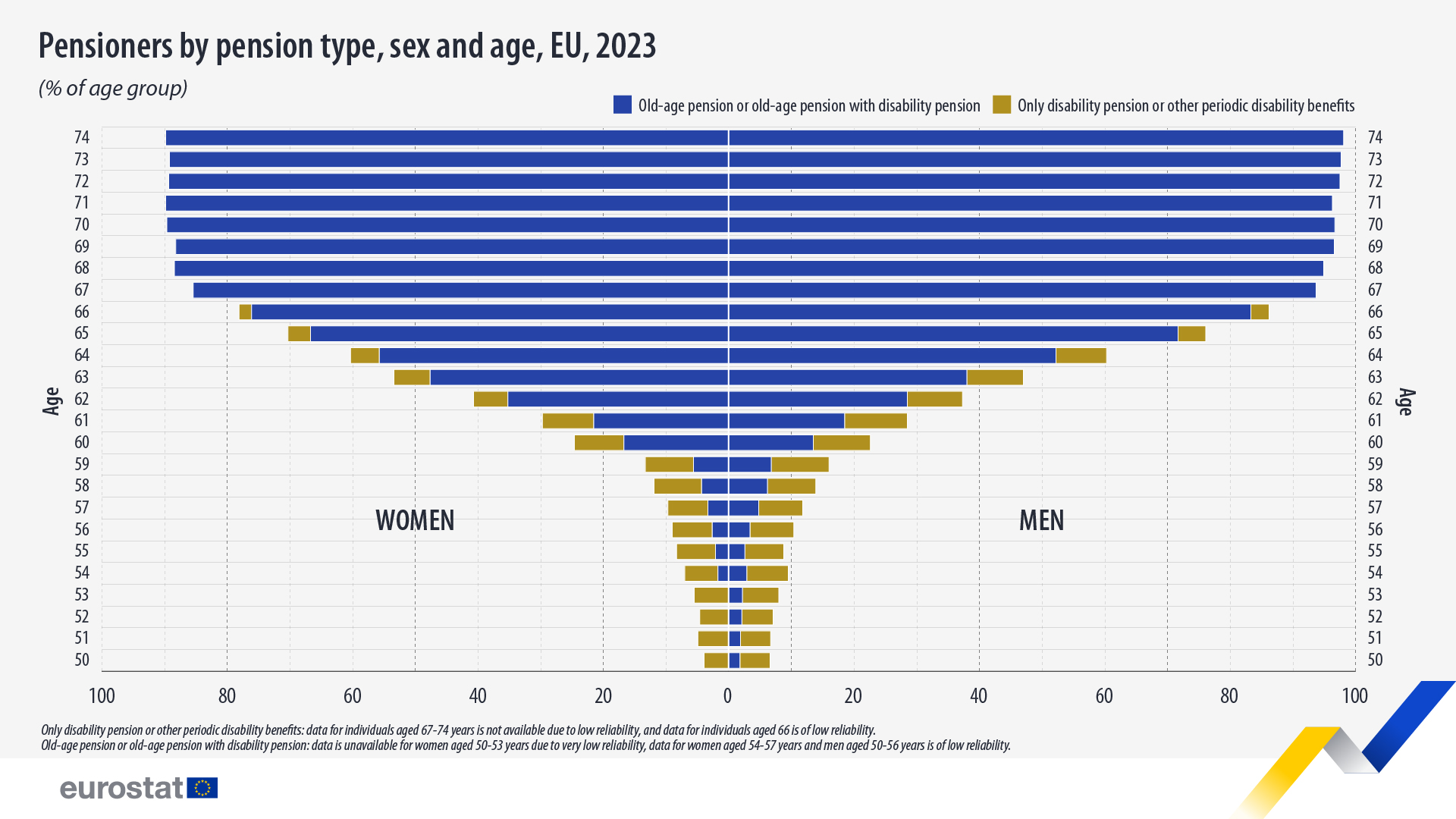
In 2023, 45.1% of people aged 50 to 74 in the EU received a pension. Within this age group, 39.7% were old-age pension beneficiaries, 4.6% received disability pensions or other periodic disability benefits, and 0.8% received both types of pensions.
From the age of 50 up until the age of 59, disability pensions were the dominant type of pension, however, the old age pensions quickly took the lead in the higher age groups. By the age group 70-74, most people received an old-age pension, with 97.2% of men and 89.5% of women receiving this type of pension.

Source datasets: lfso_23pens01, LFS extraction
Among people aged 50-74, Poland (56.2%), Estonia and Slovakia (both 54.7%) recorded the highest percentages of pensioners, while Spain (30.7%), Greece (34.1%) and Italy (35.4%) were on the lower end.
Pensioners receiving only disability pensions or other periodic disability benefits were most common in Estonia (11.5% of people aged 50-74), Denmark (10.1%) and Lithuania (9.1%). The lowest shares were recorded in Cyprus (1.9%), Malta (2.2%) and Greece (2.5%).

Source dataset: lfso_23pens01
This news article marks EU Diversity Month 2025, which raises awareness about the importance of diversity and inclusion in the workplace and across our societies.
Source: Eurostat, https://ec.europa.eu/eurostat/product?code=ddn-20250522-2